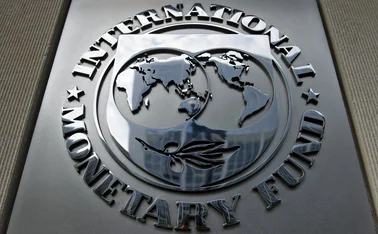
Reforming the Chinese banking system
CBRC's Shang writes on how banking reform can support sound and sustainable development

The overall guideline for China's economic and social development throughout the Thirteenth Five-Year Plan period – as pointed out by President Xi Jinping – is to understand, adapt to and generate a 'new normal' of economic development. Advancing supply-side structural reform is a prerequisite for adapting to this new normal. As a result, the banking sector needs to study and implement new concepts and strategies related to the goals of central government; analyse the development opportunities and challenges; and identify the direction, priorities and focus of our work – to understand and develop an action plan for the current situation.
Opportunities and challenges
The banking sector needs to fully recognise the historic opportunities brought about by the leadership's five development concepts of innovation, coordination, greenness, openness and sharing, while also being aware of possible 'growing pains' as China transforms its model. While the implementation of a stable macro policy, well-targeted industrial policy, flexible micro policy, practical reform policy and responsible social policy will greatly support sustainable development, the banking sector should also be fully aware of the impact that the implementation of these policies might have at an operational level.
Cutting overcapacity, destocking, deleveraging, reducing costs, shoring up weak spots and advancing supply-side reform will bring long-term benefits as well as short-term risks. In particular, banks need to deal with the closure of 'zombie companies', which will test their risk management, operating, profitability and capital replenishment capabilities.
Supporting the real economy
As President Xi has indicated, the real economy is the keystone of China's economy, so developing the real economy should be the ultimate goal of all policies, particularly financial policies. This requires reform of the banking sector to ensure it is focused on serving the real economy and facilitating the improvement of its quality and efficiency. There are three primary areas of focus:
First, to facilitate more efficient and direct flows of funds into the real economy. Banking institutions should allocate funds in a simple, transparent and efficient way within their capital constraints and risk tolerances. To ensure efficient and direct loan extensions, banks should cut embedded chains and conduits, optimise procedures and streamline processes while strictly following established loan review and approval procedures – strengthening risk prevention and control without causing funding difficulties for firms.
Second, there is a need to lower social funding costs, especially for the real economy, and keep costs within a reasonable range. Banking institutions should provide different types of financial instruments in accordance with the varying scales and development phases of enterprises, and follow the principle of commercial sustainability to ensure a mutually reinforcing relationship between banks and enterprises. Banking institutions should also strengthen loan pricing management, enhance enterprise risk management and avoid hiking financing cost for enterprises beyond rational risk pricing and fee-charging.
Third, there is a need to expand the coverage of banking outlets and services to poorly served constituencies. Established banking institutions should adopt a scientific and practical approach to improve financial services to segments such as micro and small enterprises (MSEs), agro-related businesses, high-tech and innovative enterprises, remote and poverty-stricken rural areas and vulnerable groups. Meanwhile, eligible private capital needs to be encouraged to enter the banking sector, in particular to set up private-owned banks offering consumer finance and leasing service, to take larger stakes in village and township banks, as well as to participate in the restructuring of high risk banking institutions. By optimising network distribution and services, the banking sector can also ensure equal and fair access to financial resources for the whole society.
Models for transformation
The Report on the Work of the Government (2016) states that financial structural reform should be deepened to ensure that finance can better serve the real economy. In the banking sector, the traditional business model was based on scale driven by national economic growth. As the economy gradually shifted from its previous high speed to a medium to high speed growth, banks' profit margins moderated and their non-performing loan ratios picked up. This showed that the 'obsession with speed' can no longer be sustained. Operational difficulties and increasing risks have put banks under increasing pressure to transform. During the Thirteenth Five-Year Plan period, the banking sector should defend the bottom line of no occurrence of systemic or regional financial risks and strive to build a multi-layered, widely covered and differentiated banking system by 2020. The current mission, therefore, is to accelerate the transformation and upgrading of the banking sector, rid it of dependency on external factors and an obsession with overall growth rates, and study and explore new development paths and models.
Financial innovation requires strong R&D and expertise that can unleash value from internet and financial technology. This is the key to shifting from low-end imitation to real financial innovation
Banks need to explore business models that can promote sound and sustainable development. A near-century of banking development demonstrates that 'good banks' are not those that expand their businesses aggressively or inflate their assets rapidly at a certain point of time. Instead, they thrive in a stable yet sustainable way while being able to weather economic and financial cycles. History indicates banks should stop overemphasising scale expansion while ignoring risk-adjusted performance management. They need to accelerate improving cost management, capital allocation, pricing and risk resolution; strengthen countercyclical risk management; and gradually reduce their dependency on profit-making from the economic cycle, thereby guarding against uncontrollable or irresolvable risks that might occur during an economic downturn – effectively preventing a spillover of risks.
It is important to facilitate communication and coordination among the Party committee, board of directors, board of supervisors and senior management teams at banks. Banking institutions should follow the major principles of the socialist political economy with Chinese characteristics. Banking institutions also need to develop differentiated and distinctive business models in line with their target customer bases and competitive advantages.
The banking sector also needs to pay attention to indicators that reflect profitability and risk resistance capabilities. During the transformation process, stability and sustainability are important goals, and it is important to take a three- to five-year view.
Innovation and development
China's banking sector has introduced new products and business models for MSEs, agro-related businesses, green credit, internet finance and wealth management. However, these products and models are sometimes low end, structurally less diversified and homogeneous. Some are even used to circumvent regulation and mask risks. This is largely because the banking sector has failed to fully grasp the essence of financial innovation. Financial innovation should facilitate the efficiency of the real economy, reduce financial risks and protect the legitimate rights and interests of investors and creditors. As interest rate liberalisation is accelerating and funding channels are becoming more diversified, China's banking sector must grasp the essence of innovation and focus on the quality and efficiency of innovation so as to gain competitive edges. A few steps should be followed:
First, banks need to fully upgrade research and development (R&D). Financial innovation requires strong R&D and expertise that can unleash value from internet and financial technology. This is the key to shifting from low-end imitation to real financial innovation. Only in this way can banking institutions develop high-end financial products for their target customers.
Second, banking institutions should use appropriate risk pricing models for innovative products. These need to comprehensively assess potential risks, such as the underlying asset quality risk, counterparty credit risk and market risk. They should also be prepared to use risk management measures such as stress-testing and risk hedging, and bear in mind the trading limits, stop-loss points and other limits used to control risks.
Third, banks must fully protect the legitimate rights and interests of financial customers. Banking institutions are prohibited from inappropriately transferring, masking or increasing the duration of risks to customers. Financial innovation must be transparent, simple and well regulated. The banking sector must enhance information disclosure and investor education, improve complaint handling and strengthen measures to protect consumer rights.
Improving risk management
Currently, the manufacturing sector is cutting excess capacity, the real estate industry is reducing inventory and the real economy is deleveraging. These factors play a positive role in both the transformation and upgrading of the banking sector but also pose substantial credit risks. The banking sector should also not ignore the liquidity, market and cross-sectoral risks generated by social financing.
The overall situation poses challenges to the banking sector's risk management and control capabilities as well as those of banking supervisors. So a key task for the banking sector is to strengthen risk management and control, in particular to mitigate the risks associated with existing loans and strictly control the risks in incremental loans, to mitigate the danger of systemic or regional financial risks. Practival and effective guidelines need to be introduced to prevent and mitigate financial risks
This involves putting in place a comprehensive risk management framework covering all processes and procedures, business lines, products and links. There is also a need to proactively identify and mitigate risks abiding by the principle of ‘substance over form' to strengthen the mechanisms for identifying, monitoring, measuring and controlling risks. Measures such as stress-testing, name-list management for high risk clients and ledger monitoring for risky projects, could be taken to strengthen ongoing monitoring, real-time control and dynamic management of risks. This would assist with the early identification, reporting, intervention and disposal of risks.
There is also a need to enhance risk-absorbing capacity. As the international regulatory organisations have required global systemically important banks to raise additional paid-in capital and increase total loss-absorbing capacity, China could learn from this practice to urge banking institutions to substantially enhance their loss-absorbing capacity. At present, with sufficient provisions in place, the banking sector could further utilise the provisioning coverage ratio as a countercyclical buffer to expand channels for capital replenishment, step up efforts to write off non-performing loans and enhance the market-based disposal of non-performing assets, thereby continuously enhancing risk resolution and risk-absorbing capacity.
Only users who have a paid subscription or are part of a corporate subscription are able to print or copy content.
To access these options, along with all other subscription benefits, please contact info@centralbanking.com or view our subscription options here: http://subscriptions.centralbanking.com/subscribe
You are currently unable to print this content. Please contact info@centralbanking.com to find out more.
You are currently unable to copy this content. Please contact info@centralbanking.com to find out more.
Copyright Infopro Digital Limited. All rights reserved.
You may share this content using our article tools. Printing this content is for the sole use of the Authorised User (named subscriber), as outlined in our terms and conditions - https://www.infopro-insight.com/terms-conditions/insight-subscriptions/
If you would like to purchase additional rights please email info@centralbanking.com
Copyright Infopro Digital Limited. All rights reserved.
You may share this content using our article tools. Copying this content is for the sole use of the Authorised User (named subscriber), as outlined in our terms and conditions - https://www.infopro-insight.com/terms-conditions/insight-subscriptions/
If you would like to purchase additional rights please email info@centralbanking.com
Most read
- Taking stock of Bernanke: the original sin of forecasting
- Fed policy-makers disagree over risks
- Supervisors grapple with the smaller bank dilemma








